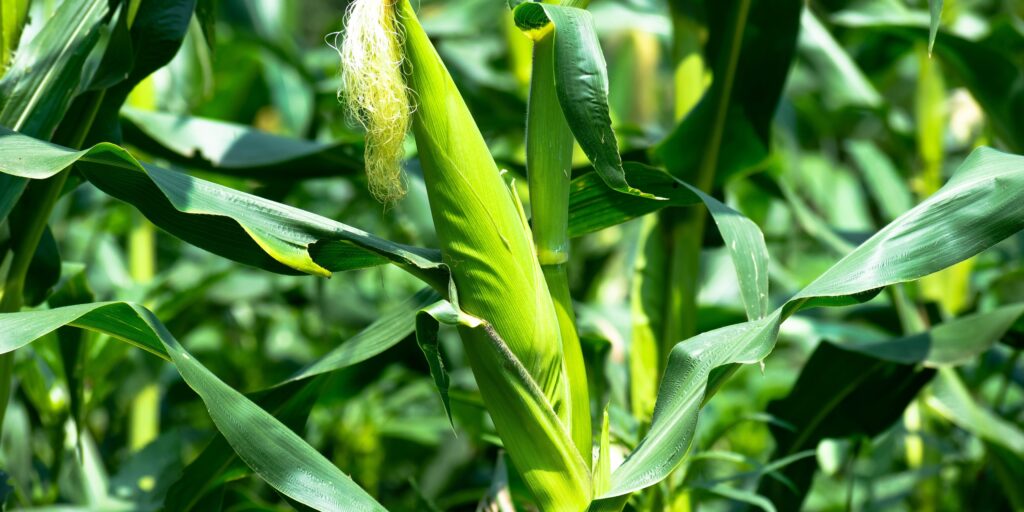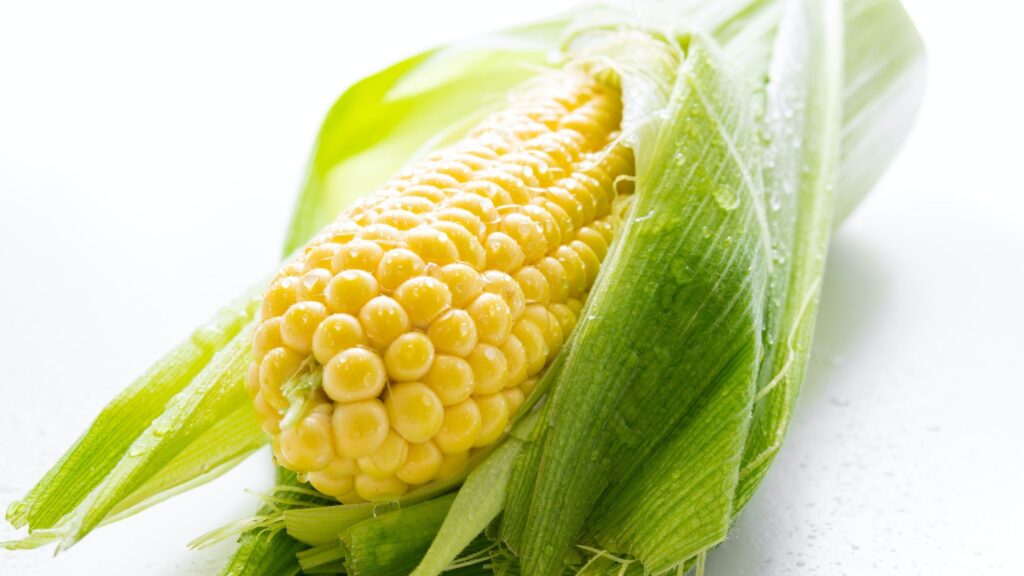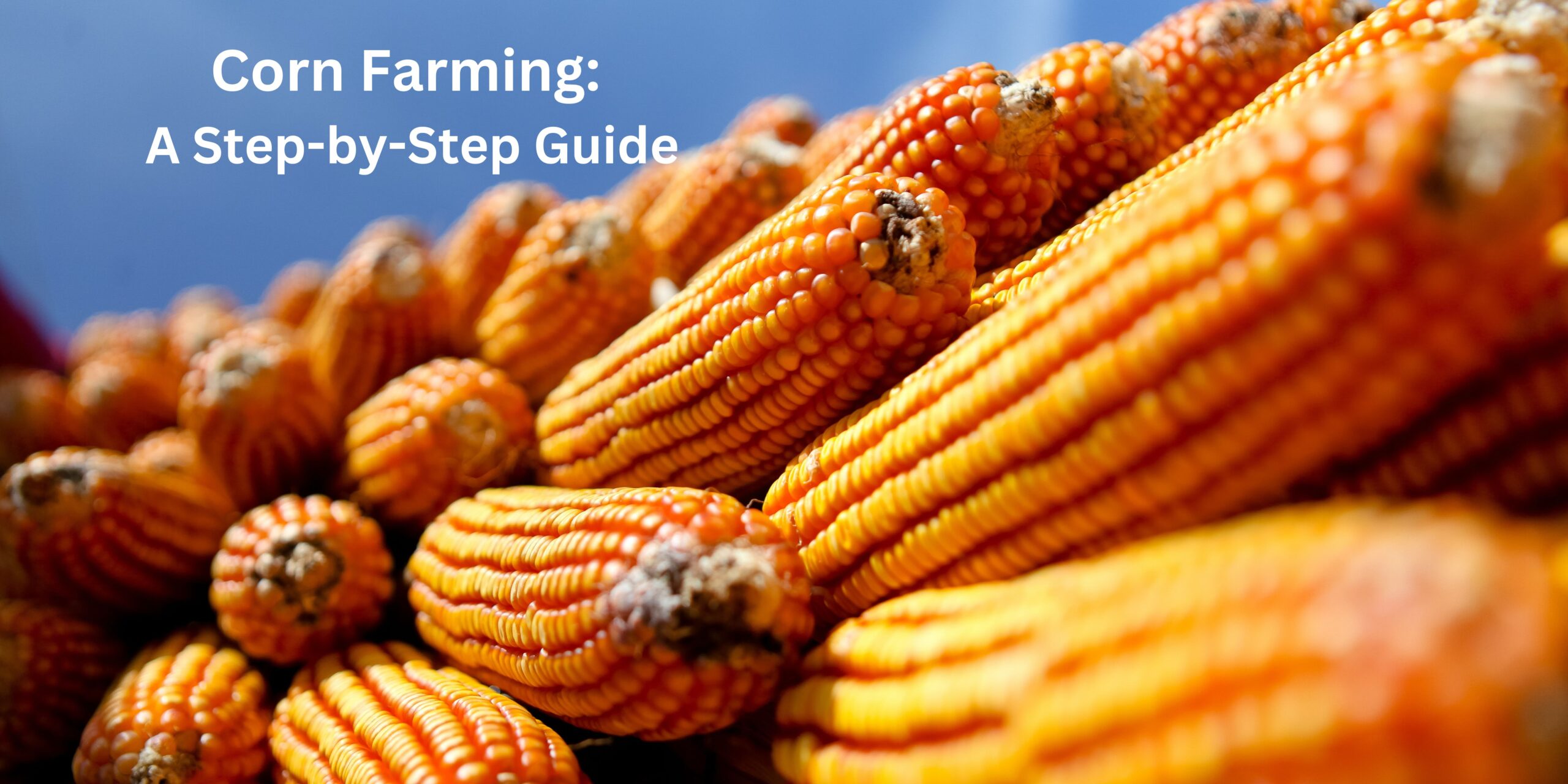Corn Farming:
Corn has been grown by humans for over 10,000 years. The plant, also known as maize, is cultivated worldwide and has expanded into many niches of commercial agriculture. This crop is annual, meaning it needs to be replanted every year.
Corn growing in warm weather can reach up to 20 feet (6 meters) in height, depending on the variety. It is one of the most productive cereal crops. Of the thousands of types in production, their number was reduced to 100 of the most resistant and biggest.
Maize grows in cobs, dense clusters of kernels around a central core or cob covered with a leaf husk. Modern consumers would not recognize corn’s archaic form; the crop’s ancestor was probably a low grass. The plant we know today was created by crossing it with other plants. It quickly spread throughout the United States due to its ease of cultivation and nutritional value.
Criteria for Corn Farming:
We should highlight the need for sun for successful cultivation of the plant, at least 6–8 hours of direct sunlight. Corn plants should receive roughly one inch of water per week for optimal growth, especially as the stalks begin to sprout tassels. It’s important to avoid overcrowding when cross-pollinating corn plants, as this can lead to a shortage of valuable grains in many cobs. It’s best to water maize at the soil level rather than from above to prevent pollen removal from the flowering tops.
How to grow corn when we talk about soil conditions? The soil should be kept constantly moist and well-drained. It is vital to have the correct soil pH range between 5.8 and 7.0 to cultivate corn successfully. The strength of the roots of the corn is directly related to the quality of the soil. Therefore, improving the soil quality in your garden before planting is essential.
Adding organic matter to the soil has numerous benefits for vegetable crops. It provides essential nutrients and attracts helpful microorganisms that contribute to the overall health of your garden. Therefore, the more organic matter you can add to the soil, the better your earth will be for growing vegetable crops.
Maize requires a lot of nutrients, especially nitrogen, to grow well. Add compost, well-rotted manure, or “green manure” like clover or vetch to the soil before planting to give your corn a head start. Once the cornstalks reach a height of 10 inches, fertilize them with nitrogen-rich organic fertilizers. It would help if you fertilized again after the corn develops tassels.
Corn Planting
For optimal pollination of corn plants, it is essential to sow a minimum of four rows adjacent to each other. Alternating the planting location annually is recommended to steer clear of illnesses, infestation issues, and nutrient exhaustion. Sweet corn is a crop that is sensitive to temperature and should be sown only once the soil has warmed up and the danger of frost has subsided.
For best results, start with fresh corn seeds. Directly sow the seeds approximately 1.5 to 2 inches (3-4cm) deep and 4 to 6 inches (10-15 cm) apart, and cover them with soil. Space your rows of seeds 30 to 36 inches (75-90cm) apart.
After planting, water your block of grain well. Corn stalks are sturdy and should not need staking. To maintain your garden bed of corn, lightly hoe the soil just below the surface to aerate it and remove weeds. As heavy-feeding plants, corn cannot compete with weeds. It is essential to avoid deep soil penetration, which can sever the shallow-growing roots of the corn.
Corn grows best in a warm, sunny climate that continues throughout the growing season. Farmers can determine when to plant corn based on accurate weather forecasts. The most appropriate time for planting seeds is about two weeks before the expected date of the last frost, in the open sun.

Best Agriculture Magazines in India
Caring Corn With EOSDA Crop Monitoring Features
Healthy corn growth requires many aspects to be taken into account. During the growing season, the plant requires sufficient watering and providing the soil with nutrients. It is also worth taking care of pollination. Protection against weeds, diseases, and pests must also be ensured.
Modern technologies can help track all events and changes in the fields. EOS Data Analytics provides reliable satellite image analytics for agriculture and other industries to make it possible to see what is invisible to the naked eye. The company has developed EOSDA Crop Monitoring, a precision agriculture platform that provides satellite monitoring of fields.
The platform enables tracking the plants’ water needs with the help of the NDMI index calculations. Thanks to this index, you can find out the current moisture content of corn, and deviations from the norm indicate problems and disturbances in the absorption of water by plants. The NDMI Index Map provides the ability to detect these abnormalities early. It gives farmers enough time to correct the situation.
The zoning feature in EOSDA Crop Monitoring helps to apply fertilizer smartly, making decisions based on data. Growers can get vegetation and productivity maps to differentiate fertilizers throughout the growing season.
EOSDA Monitoring has a range of vegetation indicators that allow you to monitor the growth and development of corn around the clock. This data, combined with the Scouting feature, helps combat pests, diseases, and other sources of problems. Early detection allows the issue to be addressed before damage is caused and resources for the fight are allocated more efficiently.
How to Harvest Corn
Now that we’ve talked about all the aspects of how to plant corn, it’s time to think about harvesting. The optimal way to harvest corn is by holding the ear firmly, pulling it down, and twisting it from the stalk with the husk still attached. The ear should be removed quickly, and at this point, you can remove the husk and silk from the cob unless you plan to grill the cobs with the husks on.

It is essential to refrigerate the sweet corn you harvest as soon as possible to slow down the conversion of sugar into starch and maintain its quality. It is recommended only to gather the amount of corn you plan to consume while it is in the “milk stage,” unless you intend to preserve and store the rest of the crop.

